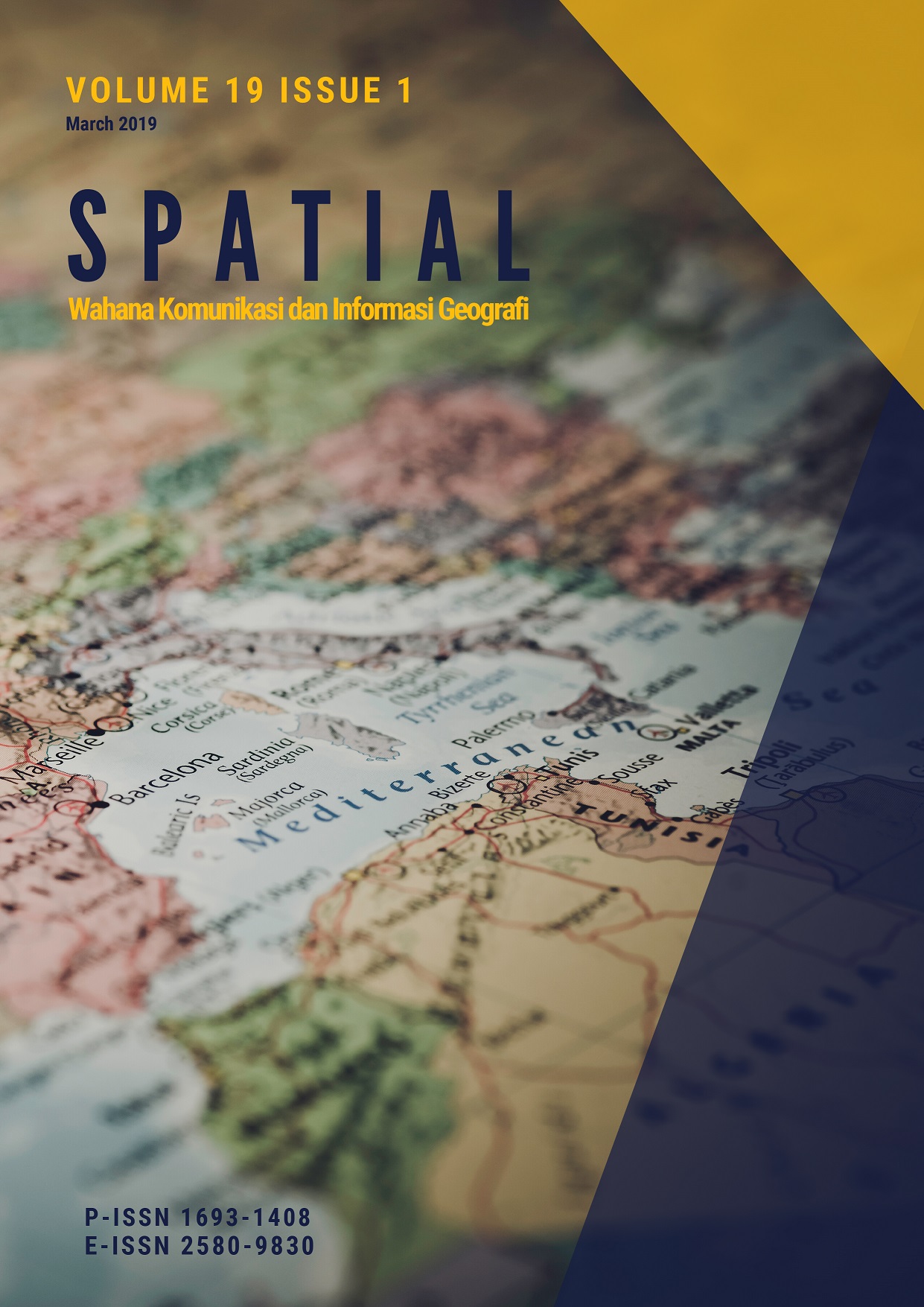Implementation of Spatial Planning in the Dieng Plateau Region of Banjarnegara Regency
DOI:
https://doi.org/10.21009/spatial.191.02Keywords:
Landuse, spatial planning, spatial implementationAbstract
Dieng Plateau is located across 6 administratives jurisdiction. It lays on 6 regencies, namely Banjarnegara, Wonosobo, Pekalongan, Batang, Temanggung, and Kendal. Most of priority part located in Banjarnegara. This research aims to analyze the condition of existing land use and its spatial planning. It also analyzes the suitability in both condition, based on criteria proposed by Ministry Regulation of ATR/BPN Number 6 Year 2017. Also, the factor causing this suitability. The method used is qualitative method. The existing condition is identified through Quickbird interpretation and field survey. Other primary and secondary data also collected from local government and population. This reseach shows that there are 11 existing land use that could be identified with the biggest amount of vegetable garden. For the planning, there are 10 types with the biggest amount of horticulture land. The level of suitability could be classified as high. From the criteria of type and amount, the unsuitability percentage is only 9,36%. While from the effect, the land use implementation effecting both local and regional scale. This condition is caused by natural factor, social factor, and other factor (technical factor and regulation factor).
Key words : land use, spatial planning, spatial implementation
Downloads
Published
How to Cite
Issue
Section
License
An author who publishes in the journal SPATIAL Wahana Komunikasi dan Informasi Geografi agrees to the following terms:
Author retains the copyright and grants the journal the right of first publication of the work simultaneously licensed under the Creative Commons Attribution 4.0 License that allows others to share the work with an acknowledgement of the work's authorship and initial publication in this journal
Author is able to enter into separate, additional contractual arrangements for the non-exclusive distribution of the journal's published version of the work (e.g., post it to an institutional repository or publish it in a book) with the acknowledgement of its initial publication in this journal.
Author is permitted and encouraged to post his/her work online (e.g., in institutional repositories or on their website) prior to and during the submission process, as it can lead to productive exchanges, as well as earlier and greater citation of the published work (See The Effect of Open Access).
This work is licensed under a https://creativecommons.org/licenses/by/4.0/









